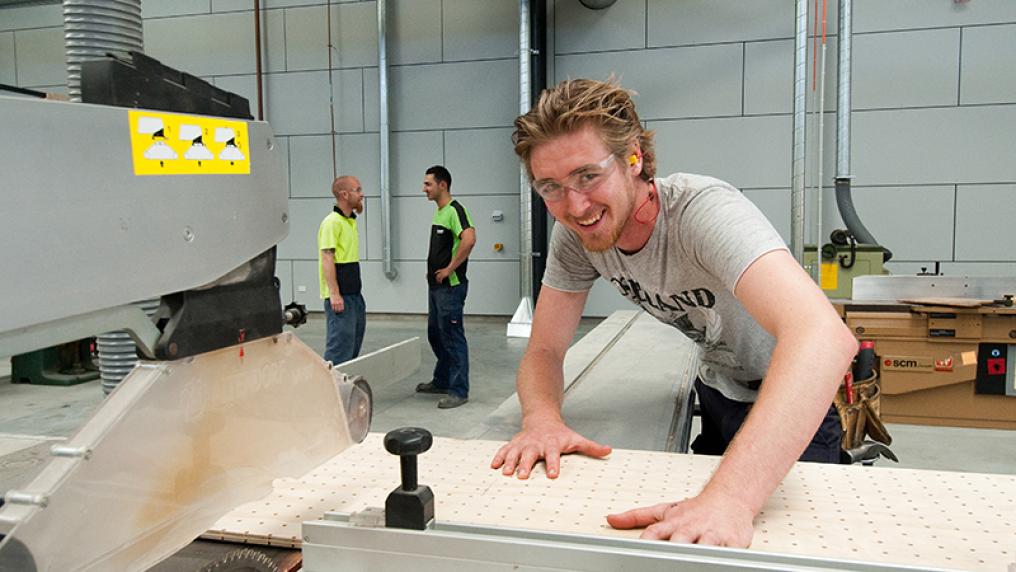Election Policy Brief: VET

After a series of lockdowns and closed borders, skills shortages are making vocational education and training a prominent election issue.
Employers of apprentices and trainees have received huge support during the pandemic, and the scandals of the past decade have subsided.
But the wider problems of the vocational education and training sector remain - it is underfunded and trust in the quality of outcomes is still an issue.
It is not clear that the major parties are offering the system wide reform required for the sector to meet the needs of the diverse groups it serves.
What is VET & why is it important?
Vocational education and training (VET) is one of two major divisions of Australia’s tertiary education system (the other is higher education).
Well known parts of VET include apprenticeships and TAFEs. But though the sector includes a diverse array of government, community and for-profit providers who deliver a huge range of programs.
States, territories and the Australian government share responsibility for VET funding and governance.
Funding contributions to the sector are split between the two levels of government.
The large increase in funding from the Australian government in 2020 is largely due to spending on employer incentives for apprentices and trainees. The Australian government has said in the 2021-22 financial year, its total funding contributions for VET will increase to $7.8 billion.
While the policy focus has been on apprentices and trainees, the VET system provides training to a wide range of occupations.
About 6.5 million people are employed in occupations with a skill level commensurate with a VET qualification, and about 41% of forecast job growth to November 2025 are in occupations aligned to VET qualifications.
What are the major issues?
Apprentices are an important option for young people and account for about 10% of the pathways young people take from school to work.
Outside of apprentices and trainees, the VET sector continues its long decline as a pathway. In 1986 there were roughly the same number of young people aged 15 to 24 enrolled at VET institutions as there were at higher education institutions. By 2016, the split was 78% higher education and 22% VET.
Part of the reason for this decline is chronic underfunding of the sector. Mitchell Institute analysis shows that universities receive about twice the amount per full time equivalent student as vocational providers.
Universities are also more able to supplement the domestic student income from international students. International students at VET providers, however, are concentrated at non-public providers. TAFEs are largest providers in VET, but they only enrol about 5% of VET international students.
A major part of the government’s response to broader skills training needs is through JobTrainer, which it claims will offer “450,000 places for school leavers and job seekers to upskill”. 450,000 sounds like a lot but what constitutes a place or an enrolment in VET can vary enormously and range from a half a day first aid course to a four-year apprenticeship.
The most recent year-to-date data shows that while government funded full-time equivalent enrolments have increased in 2021 compared to 2020, they have not exceeded pre-pandemic levels.
What are the major parties offering?
The memory of policy disasters and the current skills shortages mean that key VET battlegrounds will be sector stewardship and the sector’s role in meeting skills needs.
As evidence of their support for the VET sector, the Coalition will highlight their funding of apprentices and trainees during the pandemic, trading off the public association of apprentices with wider VET.
The Coalition can argue that federal investment in VET is at record levels because of their policies, even though this is largely due to the wage subsidy program that employers receive instead of general investment in the sector.
The Coalition will highlight the $3.7 billion over five years for the new announced in the recent. But analysis shows this amount returns Commonwealth funding to pre-pandemic levels. It is also unclear whether states and territories will agree to the conditions placed on the funding.
Labor is framing its VET policy around a restoration of locally manufactured products and green skills. Labor is adopting the ‘Free TAFE’ programs that originated in the states and placing a requirement that 70% of Commonwealth funds go to public providers.
The Greens have the most ambitious policy by offering free education across all levels of education and a focus on public provision of education. This involves removing funding for any education provider which is for-profit and the abolition of student debt.
What major parties seem to be battling over is who is best placed to restore VET so that it more effectively meets skills needs and functions as a pathway for young people.
Missing from the major party policy platforms is the sector wide reform that might tackle structural issues and underfunding that would enable VET to reverse its long-term decline in enrolments relative to the higher education sector.
This article was first published in the Age.



